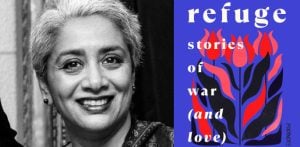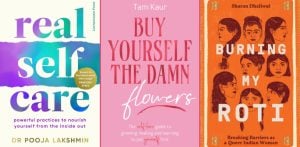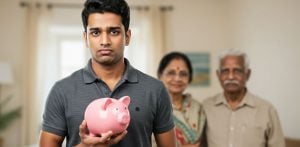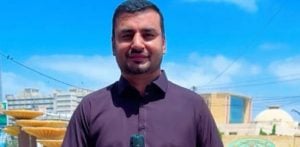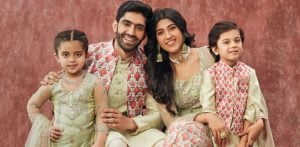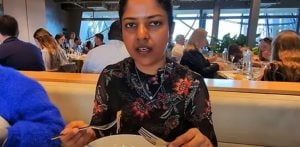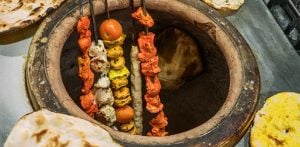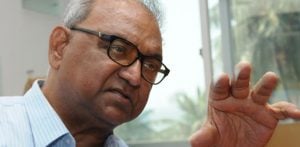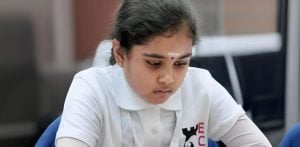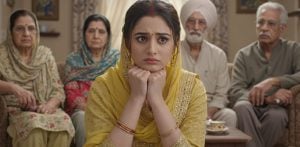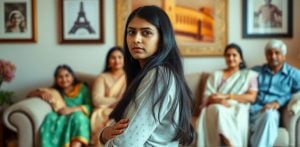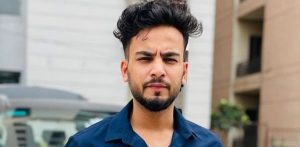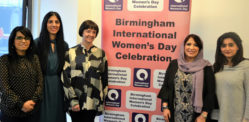"Therapy is for pagal log (mad people)."
In the heart of Birmingham’s Handsworth neighbourhood, 72-year-old Ajit Singh sits silently at his kitchen table. A profound loneliness engulfs him like an invisible shroud.
His wife passed three years ago, yet he still unconsciously sets out two teacups each morning. He dismisses it with practised stoicism: “Just habit, nothing more.”
But this habit hides more behind this daily routine. British South Asian men and women from the elderly community are suffering in silence when it comes to their actual mental health needs and support.
This emotional silence represents a crisis sweeping across older Britain’s South Asian communities.
While some elderly may still live in multigenerational households, many experience profound isolation that even family proximity cannot remedy. This isolation and mental sorrow are exacerbated greatly if they live alone.
A systematic review published in the Journal of Racial and Ethnic Health Disparities highlighted that South Asian communities in the UK underutilise mental health services due to factors such as stigma, cultural beliefs, and institutional barriers.
The study found that South Asian service users often feel distanced from mental health services, experiencing a dilemma of trust and a threat to cultural identity, which contributes to the lack of use of these services.
The reasons behind this reluctance stretch across generations, continents, and deeply held cultural beliefs.
For those who migrated between the 1960s and 1980s, seeking mental health support isn’t merely uncomfortable; it’s often unthinkable.
Silence Passed Down

The emotional reticence of older British South Asians has deep historical roots. Many carry unprocessed trauma from partition, migration hardships, and the profound displacement of leaving homelands behind.
For those who arrived during Britain’s industrial expansion, emotional survival meant practical stoicism. Feelings became luxury items that couldn’t be afforded when physical survival demanded all resources.
Amina Shah, a British-Pakistani psychologist, says:
“In our community, admitting emotional struggle feels like surrendering a lifetime of resilience. Our parents and grandparents built their identities on silence and strength, never complaining. Breaking that pattern feels like betrayal.”
Elderly people from British South Asian communities often transform pain into productivity. Emotion becomes weakness; endurance becomes virtue.
46-year-old Surinder Singh says:
“My father hasn’t cried since 1974, whose parents came to Southall from Punjab. Not when I lost my mother and his wife, not when my brother had a fatal accident and not even when his best friend passed last year.”
This emotional inheritance passes silently between generations. Children learn to minimise their struggles by watching parents who normalise suffering without acknowledgment or relief.
The consequences manifest in troubling health statistics. Depression rates among older South Asians exceed the national average by 40%, yet treatment-seeking behaviours remain dramatically lower.
Cultural concepts like “khandaan ki izzat” (family honour) discourage emotional disclosure. Problems stay within family boundaries, where they often remain unresolved rather than being exposed to outsiders.
Community worker Jamil Ahmed says:
“Our elders were taught that dignity means silence. They survived the unimaginable without therapy. Why start now, they wonder, when they’ve managed for decades?”
Living Together or Not, Still Feeling Alone

The paradox of South Asian elder loneliness often confuses outside observers. How can someone surrounded by family, often in multigenerational homes, experience isolation rivalling those living alone?
The answer lies in emotional rather than physical isolation. Many elders exist in emotional solitude despite constant company, their inner worlds increasingly disconnected from the bustling households around them.
Technology widens this divide. As younger generations navigate digital lives, many elders feel left behind in rapidly changing household dynamics that prioritise screens over conversation.
Cultural, digital and linguistic gaps between generations create profound disconnection.
Mrs Shanti Bhen Patel, aged 69, laments:
“My children and grandchildren speak English at home. I understand some, but something is lost. They spend most of their time on their phones, not talking much. They live in a different Britain than I do.”
The death of a spouse often triggers catastrophic loneliness. Many marriages were forged in migration, creating uniquely intense bonds that, when broken, leave survivors profoundly adrift in an already foreign land.
Reduced social standing compounds this isolation. Once-respected providers now depend on children, creating identity crises that few family members recognise as mental health concerns.
Religious spaces that once provided community often become less accessible with age and mobility issues. Weekly mosque, gurudwara, temple visits, once central to social life, gradually diminish as health declines.
Traditional roles evaporate within British contexts. Village elders whose wisdom once guided communities find their knowledge increasingly irrelevant to younger generations navigating different cultural landscapes.
This invisibility creates profound grief rarely acknowledged as such.
Mr Jasdev Bhogal, aged 77, says:
“No one asks for my opinion anymore. I was somebody in Uganda. Here, I’m just an old man in the corner.”
A study focusing on British South Asian women elders found they experienced isolation as a key issue, with one participant describing “feeling stuck” and “isolation (due to stigma or self-imposed)” as primary themes.
Changing family structure (joint to nuclear families), loss of partners, migration for work and busy professional working lives are a few reasons why the family are absent when it comes to providing care for the elderly.
Shakuntla Devi, an 80-year-old, says:
“They don’t care, we are left alone. My son says, what can I do? If I phone him, he says mum, I haven’t got time. Then do you ring again? If they haven’t got time then what are going to get out of telling them? And telling other people? There’s no need to burden others, I feel.”
The emotional world of British South Asian elders thus becomes increasingly private, internal, and isolated, despite families who love them genuinely but lack frameworks to bridge these invisible divides.
This kind of division and isolation is even more profound for those who do not live with extended families, which is becoming the norm among British South Asian communities. Parents and grandparents are no longer part of an environment once seen as a typical Desi household.
Hence, increasing the prospect of mental health decline among British Asian elders dramatically.
Mrs Savita Sharma, aged 72, says:
“My children and grandchildren live far away. I see them a few times a year. Living alone compared to the life you had in the past weighs heavily on you. I feel my depression is a direct result of this. You then often wonder what’s the point of living like this?”
A study published in the European Journal of Ageing indicated that loneliness is consistently higher among Bangladeshi, Pakistani, African Caribbean, and Chinese groups compared to the Indian group.
It reported that 62% of Bangladeshi elders aged 65 and over in England and Wales experienced loneliness, a rate significantly higher than the 8–10% reported among Indian elders and the general UK population
Using the De Jong Gierveld scale, the study found that 60% of all participants were defined as lonely, with 24% classed as severely lonely.
What Therapy Means to Them

For many first-generation migrants, the concept of therapy carries profound stigma.
Mrs. Prakash Kaur, aged 67, who came to Leicester from Nairobi in 1975, says:
“Therapy is for pagal log (mad people). Why would I want to go and talk to a stranger and tell them my private business? We don’t show our naked tummy to people in this way, you know. My problems are mine to solve.”
Language barriers compound this misunderstanding. Many psychological terms lack direct translations in South Asian languages, creating a disconnect between emotional experiences and their expression.
The western approach to mental health is built on individualism and self-exploration. It often clashes with collectivist values, emphasising family cohesion over personal healing. Therapy, therefore, feels like cultural betrayal.
For deeply religious elders, struggles with depression or anxiety may be interpreted as spiritual failings or divine tests.
Trust barriers further complicate access. Many wonder how a therapist, especially someone outside their cultural background, could possibly understand their specific life experiences.
Fatima Syed, talking about her mother’s resistance to therapy, says:
“My mum asked why she should talk to someone who does not know anything about her, and besides, why does she need something like this, when she has her faith. She believes prayer is enough for her and does not need anything else.”
The therapy process itself feels alien. The expectation to dissect emotions verbally contradicts lifelong habits of emotional containment and the cultural premium placed on dignified silence.
There’s also genuine fear of consequences. Many elders worry that acknowledging mental health issues could affect their standing in tight-knit communities where reputation remains paramount.
South Asian men especially struggle with therapy’s perceived threat to masculinity. Having provided for families under difficult circumstances, many view emotional vulnerability as undermining their life’s central achievement.
Salman Ahmed, aged 41, a mechanic, concerned about his father’s declining mood, says:
“My father would never ever admit he’s struggling. He’s a proud man and worked hard to provide everything for us. His generation equates needing help with fundamental failure as a man.”
“But seeing his mental health decline after he lost his sister, I find it hard to get him to open up for help. He always dismisses my approaches as nonsense and Western ways.”
Raj Poppat, a businessman and divorcee, aged 51, says:
“For men from our culture, it’s never easy to talk about these things.”
“We can talk about everything else but find it hard to tell others about our real problems. It’s a mask most men will wear, not to show weakness to others, despite drowning inside.
“After my divorce, my mental health declined because my life was completely the opposite of what I knew. I was alone, lost and confused about what happened and if it was all my fault – when I knew it was not.
“But I bottled it all up and kept it to myself and never talked to anyone about how I felt and still do.”
The Body Speaks When the Mind Can’t

When emotional language fails, the body often speaks instead. South Asian elders frequently express psychological distress through physical symptoms, a process clinicians call “somatisation.”
Chronic headaches, persistent digestive issues, unexplained fatigue, and non-specific pain often represent depression or anxiety in those lacking vocabulary or permission for direct emotional expression.
Priya Shah describes the problems her mother experienced:
“My mother complained of stomach pains for years. Countless tests found nothing. This worried the whole family. We tried different consultants and even went private.
“It was not until one doctor suggested we seek mental health help as an alternative resort. Only when she finally saw a therapist did we realise she was carrying decades of unprocessed grief.”
This physical manifestation of emotional pain often confuses healthcare providers unfamiliar with cultural contexts. Symptoms get treated while their emotional roots remain unaddressed.
Elders from British South Asian communities often describe depression in purely bodily terms such as heaviness, exhaustion, or mysterious ailments.
Cultural idioms of distress vary significantly between South Asian communities. Punjabi elders might describe “sinking heart” (dil doobna), while Bangladeshi seniors refer to “pressure in the head” (mathay chap).
These expressions represent legitimate distress but often lead to medical rather than psychological interventions. Years of tests and medications follow while emotional needs remain unrecognised.
GPs report frustration with seemingly unresolvable complaints. Dr. Williams, who serves many South Asian patients at his surgery, says.
“We run every test, find nothing, yet the suffering persists. It’s only now that we are starting to realise the South Asian stigma towards mental health in the UK and how physical symptoms may well be connected to the mind and not the body of these patients.”
Family members often reinforce this medical framework, finding it more acceptable to discuss physical rather than mental health. “Take your tablets” becomes easier advice than “share your feelings.”
This somatisation carries real health consequences. Research indicates mental health concerns expressed physically correlate with higher healthcare costs, increased hospitalisation, and poorer overall outcomes.
Pathways to Healing

Despite these complex barriers, promising shifts are emerging within British South Asian communities. Younger generations increasingly recognise their elders’ emotional needs, having themselves embraced mental health awareness.
Culturally adapted services show particular promise. Organisations like Taraki specifically address South Asian mental health needs, while the Sangat Centre provides culturally sensitive counselling with therapists who understand community contexts.
Language-matched therapy proves transformative. 42-year-old Harpreet Saini says:
“When my father could finally speak Punjabi in therapy, everything changed. He didn’t need to translate his pain into a second language.”
Religious leaders increasingly bridge traditional spirituality with mental health awareness. Progressive mental health support within community spaces is helping reduce stigma through trusted endorsement.
Intergenerational dialogues create breakthrough moments. Adult children sharing their own therapy experiences sometimes open doors for curious if cautious elders to reconsider their resistance.
The South Asian Health Action charity developed ‘The Mental Health Working Group’, which was set up to highlight areas of inequalities in Mental Health in the UK’s South Asian Community.
The charity is committed to community-based approaches to mental health support. Creating dialogues to find ways to engage communities and individuals to seek help.
Small vocabulary shifts make enormous differences. Framing mental health as “emotional wellbeing” or “peace of mind” rather than “psychiatric treatment” significantly increases receptivity among tradition-minded elders.
The NHS has begun recognising these needs through cultural competency initiatives. Some areas now offer specific mental health services with staff trained in culturally appropriate outreach.
Dr Amal Lad, a Birmingham-based GP, is deeply committed to improving mental health awareness within Britain’s South Asian community, using creative methods to drive change.
He founded the Meducasian project, a partnership between healthcare professionals and local communities, which is aimed at challenging mental health stigma.
Drawing from direct experience, he shares:
“The South Asian perspective of mental health is unique concerning the stigma and the stereotypes surrounding mental health.
“For men, it can become difficult to speak about their feelings as there is no language for it.”
The Meducasian Project tackles stigmatisation by engaging with British Asian elders in familiar spaces, temples, gurdwaras, and community centres. By de-medicalising mental health and opening up honest, non-clinical conversations about wellbeing.
Dr Lad adds:
“In my experience, when it becomes a medical problem that you have to see a doctor, it becomes difficult for South Asians to talk about. Through using all of the great things about the Indian culture like Bollywood, cricket, and festivals, we aim to stimulate these conversations.”
Success stories can inspire change. Ayesha, the granddaughter of an Asian elder, says:
“My grandmother’s depression lifted after six months of culturally sensitive therapy. Now she tells all her friends – ‘It’s not madness, it’s medicine for the heart.”
Technology occasionally bridges rather than divides. WhatsApp groups specifically for elders provide safe spaces for emotional expression, particularly for those physically isolated from cultural communities.
Breaking the Cycle

The path forward requires multilayered interventions. Healthcare providers need cultural competency training specifically addressing South Asian elder mental health needs and expression patterns.
Family members play crucial roles by normalising emotional conversations. Simple questions like “How are you feeling, truly?” can gradually open doors long assumed permanently closed.
Communities must address honour-centered stigma directly. Religious leaders hold particular influence in reframing mental health support as strength rather than weakness or failure.
Medical professionals should screen vigilantly for somatisation, recognising that physical complaints often mask emotional distress, particularly in patients from cultures where mental health vocabulary remains limited.
Language matters profoundly. Services described as “wellbeing support” rather than “mental health treatment” face significantly less resistance from community elders cautious about stigmatising terminology.
For younger British South Asians, understanding this hesitancy as cultural rather than personal stubbornness creates compassion. Our elders aren’t simply “difficult”, they’re navigating complex cultural crossroads.
British South Asian community organisations increasingly recognise elder mental health as a priority. Annual health campaigns now include psychological well-being alongside traditional physical health screenings.
Progress happens through relationships rather than clinical intervention alone. Trusted community figures often succeed where healthcare systems fail in bridging these sensitive cultural divides.
The next generation of British South Asian healthcare professionals brings a unique understanding to these challenges. Organisations like the British Association of Physicians of Indian Origin look at ways to prioritise elder mental health initiatives.
Hope exists in evolving narratives. Rahima Begum shares her story about her father saying:
“My mother finally spoke to someone after her stroke. The counsellor spoke Bengali and understood village life. Mum said it felt like talking to an old friend.”
Beyond Silence

For too long, the emotional lives of British South Asian elders have remained invisible, unseen even by loving families and communities. Their stories of migration, loss, and resilience deserve witness and validation.
Their suffering, expressed through silent tears, unexplained illness, or stoic withdrawal, represents not weakness but the accumulated weight of extraordinary journeys across continents, cultures, and profound historical change.
The path forward requires not just professional intervention but community evolution, spaces where emotional expression becomes cultural strength rather than shameful weakness. Our elders deserve nothing less.
As younger generations increasingly embrace mental health support, opportunities emerge to gently guide parents and grandparents toward emotional vocabulary they were never permitted to develop in their own youth.
If you recognise your elders in need of mental health help but not asking for it, consider beginning conversations with compassion rather than confrontation. Small openings often precede profound healing.
Organisations like Taraki, South Asian Health Action, and the Sangat Centre welcome enquiries from families seeking culturally appropriate support for elders experiencing isolation or emotional distress.
Elders may still have pride, shame or not even the courage to ask for help. So, it’s time to help them break that silence.
Our British South Asian elders built lives on sacrifice and silence, so helping them find their voices to open up when they need help may be the best gift you can offer them.


